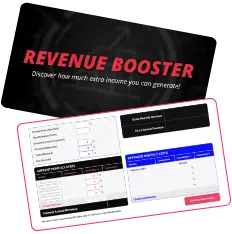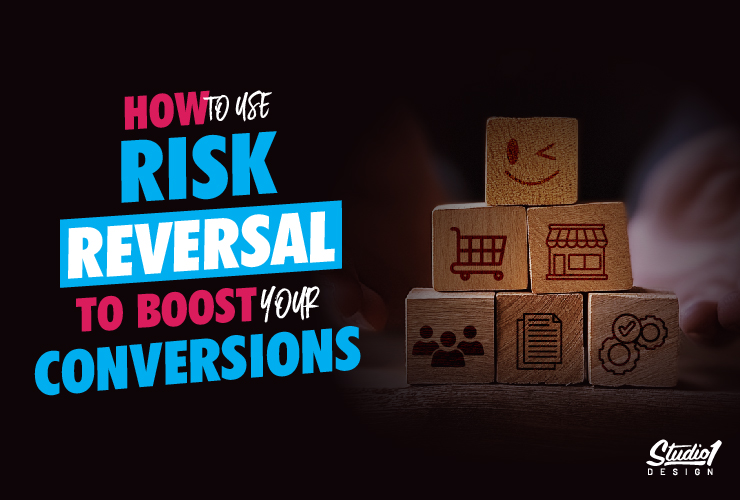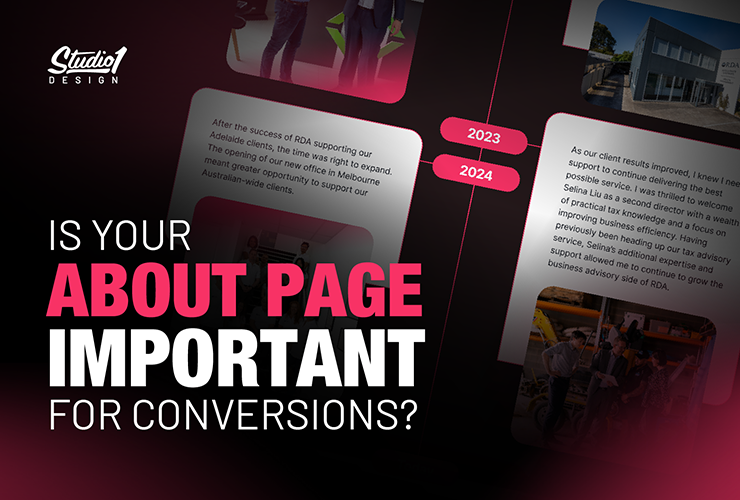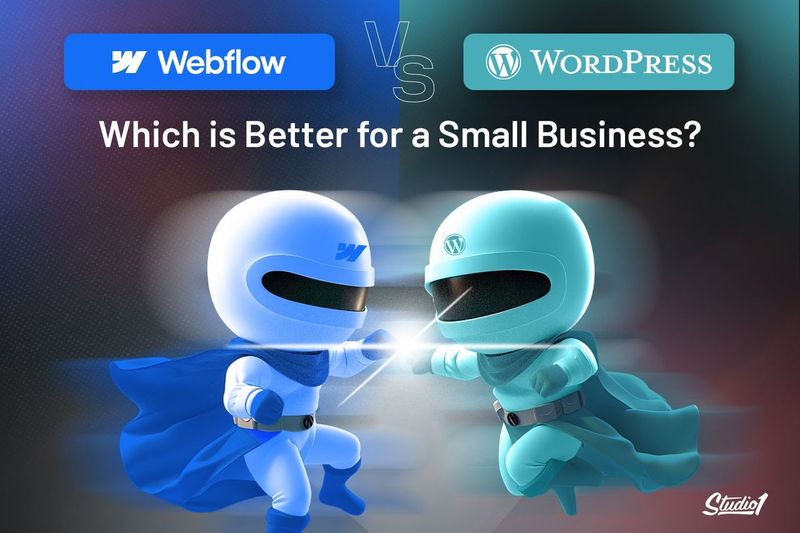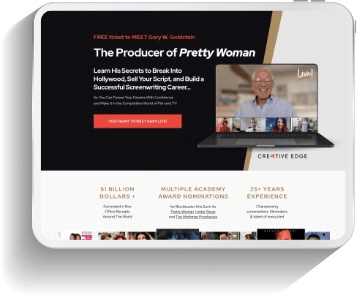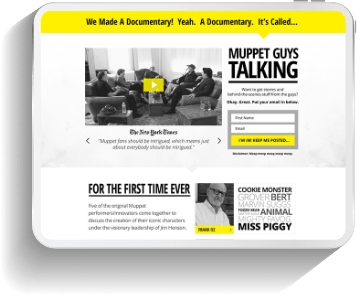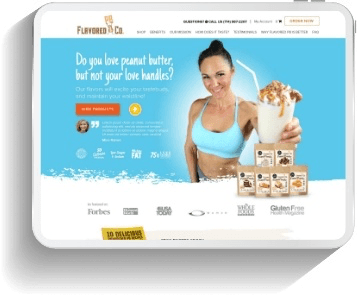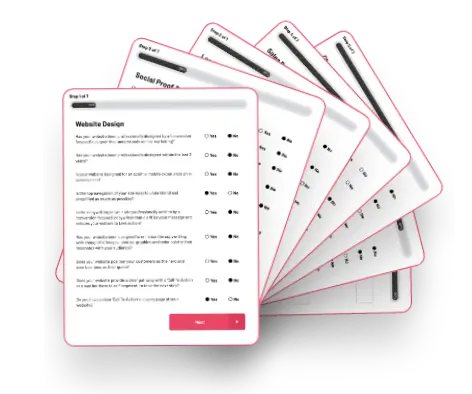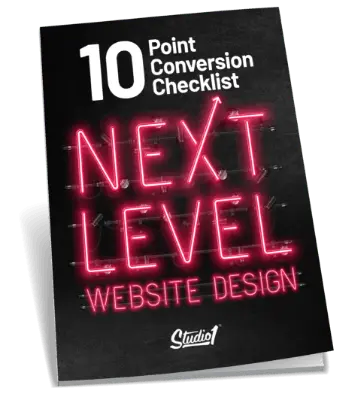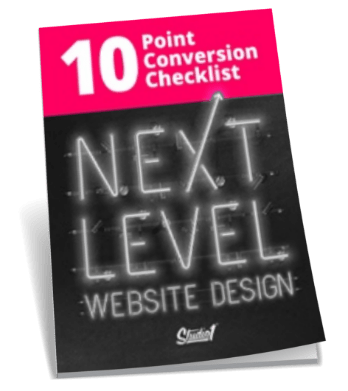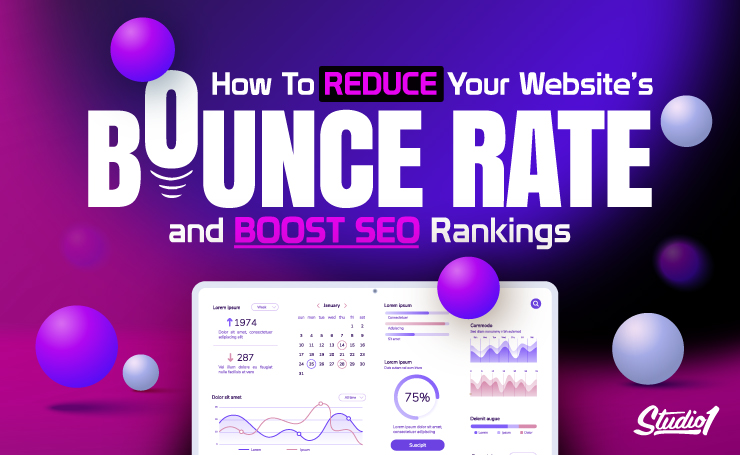
In the digital world, your website is your storefront, and its design is your packaging. In the same way that dull packaging fades into the background when scanning store shelves, whereas attractive packaging grabs your attention, a well-designed website grabs attention and encourages visitors to take action.
When we started Studio1 Design over 20 years ago, we designed packaging and point-of-sale displays for large retail stores.
This foundational experience has honed our expertise in designing high-converting websites. How?
We use the same principles — colors, copy, visual hierarchy, layout, imagery — to influence purchase decisions without needing a salesperson to help out.
Just as compelling packaging invites exploration, a well-designed website, like eye-catching packaging, holds the power to captivate and convert.
By creating conversion-focused web designs, we help you turn first impressions into lasting customer relationships.
High Bounce Rates Are Costing You More Than You Think
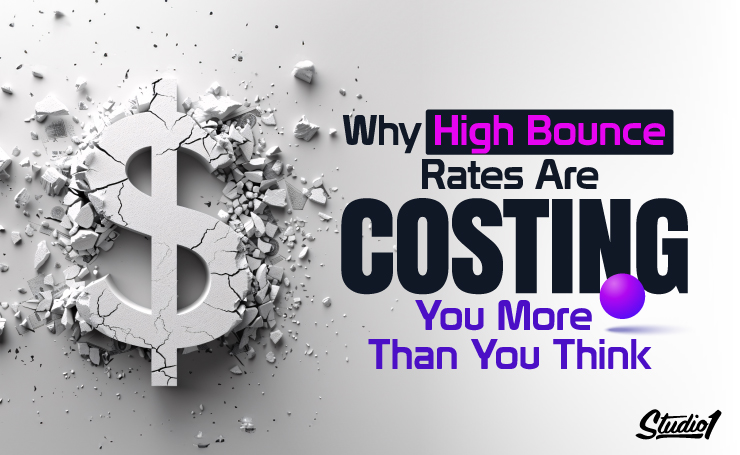
When visitors bounce off your website, it costs your business money, time, energy, and opportunity.
You’ve invested a lot in getting traffic to your website – time creating content and social media, money on SEO, and maybe more money on PPC ads – but do the visitors you get stay? Every bounce costs you money.
A high bounce rate will not just lose your current visitor, over time it will also drop your page ranking – because Google notices and Google ranks you lower because your visitors don’t stay.
And it’s not just that single visitor you’re losing. You’re also missing out on their potential to share your site with their friends, family, and colleagues—further expanding your missed opportunities.
Your Website Visitors Leave and You Don’t Know Why
When visitors find your website unappealing or difficult to use, they don’t usually provide feedback—they will simply exit, and you may never understand why.
Likewise, a high bounce rate on your website impacts your search engine rankings. As Google evolves to mimic human behavior better, it increasingly factors user experience into its rankings.
But it doesn’t have to be this way. Imagine every visitor who leaves without taking action could have become a customer, potentially referred others, and sparked a chain of new referrals.
This is what you could be missing out on with a poorly designed website. Don’t let a subpar user experience hold back your business potential!
User Experience: The Cornerstone of Low Bounce Rates
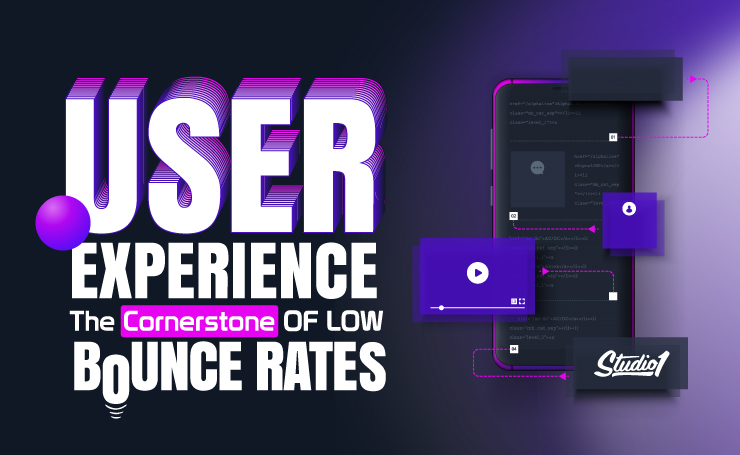
If your user experience sucks, your bounce rate increases.
Steve Krug’s “Don’t Make Me Think” principle remains the gold standard for UX design to provide your website visitors with a great user experience. Key takeaways include:
- Design with clarity – what you offer and how your visitors can buy it should be super-clear in one glance.
As Steve Krug puts it “Self-evident enough that your next-door neighbor who has no interest in the subject of your site and who barely knows how to use the BACK button could look at your web page and say ‘oh, it’s a…’” (Steve Krug, p 11, Don’t Make Me Think).
Remember – what’s obvious to you as an expert, may not be obvious to a busy working mother trying to solve a problem on her phone while waiting in the car on her school pickup run.
If your webpage requires your visitor to think about what you mean instead of the problem they’re trying to solve, then your ego might be happy – but your bounce rate is higher than it needs to be.
Keep it simple and outline your offer CLEARLY. For example, when you look at the Kamari website – the clear offer is “find your perfect bikini fit”, whereas Effortless Swimming is clearly all about “swimming faster with less effort”.
- Design for scanning, not reading – People don’t read a website like they do a book – they scan it like a newspaper or magazine.
In design terms, this means things like:
- Headings that act like headlines
- Opening sentences that capture the essence of their paragraphs
- Bullet lists instead of long-form descriptions.
When your website does load, it then takes less than 2 seconds for someone to scan your website and hit the most-used button in web searching – the <BACK> button,
If they don’t see the answer to their question, that’s what they’ll do. So be clear about:
- Who you help
- The value you offer
- Why YOU really can DELIVER on that value.
Be clear about who you help. Let your visitors know who you serve and how you serve them – quickly.
- Use informative images, diagrams, and visual guides – that’s what the human eye processes fastest.
Use relevant images to add information – fast. Make sure the images support your story and convey information.
Half of the nerve fibers in our brains are linked to our vision and, when our eyes are open, vision accounts for two-thirds of the electrical activity in the brain.
It takes just 150 milliseconds for the brain to recognize an image and a mere 100 milliseconds more to attach meaning to it.
Raworth, Kate. Doughnut Economics (p. 11)
- Make navigation effortless – With the explosion of mobile devices, super-friendly, clear navigation matters more than ever.
If you’ve ever had to navigate around a complex website on your mobile, you know how tempting it is just to hit the back button.
Long-form home pages with obvious, easily scannable, easily navigable content will keep people “swiping up” on their mobile or scrolling down on their laptops.
Make your home page a gateway to the rest of your website, using CTAs that allow visitors to dive deeper into specific interests.
Here are three long-form, super-scannable websites – favorites from our design portfolio – so you can see this in action: Art City Music Academy, Mark Ottobre, and The Online Dog Trainer.
Slow Loading Times: A Conversion Killer You Can’t Ignore
Don’t keep people waiting for your website to load – because slowness is a conversion killer.
Your visitor’s brain only needs 250 milliseconds to process the images you present to them and create meaning. So every extra second that you make them wait for your website to display gives their brain a big chunk of processing time in which to get bored, distracted, and impatient.
This is doubly on mobile devices. People browsing on mobiles are typically multi-tasking their way through a busy day, so they have a much greater distraction potential than those sitting at a desk. Speed rules!
Also, focus on human-centered design which includes ensuring mobile responsiveness and accessibility, to create a seamless experience for all users. By prioritizing these aspects, you improve overall website performance and create a more engaging, enjoyable user experience.
How to Test If Your Website Is Truly User-Friendly?
The usability of a website you’ve been intimately involved in designing can be difficult for you to judge. So get outside opinions.
One way to do this is to sit down with a “friendly stranger” and get them to use your website. Don’t talk to them! Don’t explain! (If you need to explain ANYTHING, then you know you have a usability problem.)
Just watch them – you’ll soon find out how clear and compelling your offer is.
Just as a seamless user experience keeps visitors engaged, the right design in your brand attracts potential customers and encourages them to stay longer on your website.
Design a BRAND, Not a Pitch!
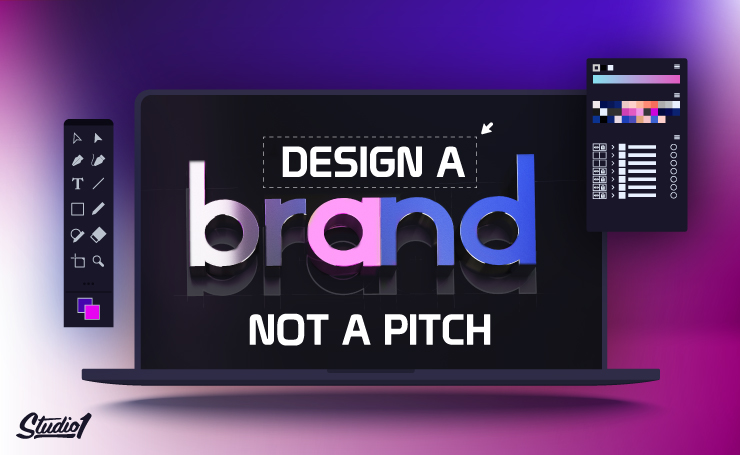
Our work starts with expert, commercial graphic design – informed and validated by carefully tested user experience and then supercharged by the science of influencing.
When Steve Krug wrote ‘Don’t Make Me Think’ back in 2000, today’s design technology would have been unachievable. But human brains haven’t changed that much, so most of his principles still apply.
To create a strong visual brand, you need to design the mood you want your business to create. That mood is as much a part of your brand as your copy and your images.
That mood is defined by your color palette, your feature images, and your font combinations.
Pro Tip: Fonts give words a personality!
The personality of the typeface you choose sets the tone for what you are about to read. The right font combination is like a carefully accessorized outfit. The outfit gives you the first impression of a person and will influence how you listen to them.
Fonts have different personalities that can create trust (or mistrust). A font can exude confidence, make things seem easier to do, or make a product seem to taste better.
These font personalities are hidden in plain sight and can trigger memories, associations, and multisensory experiences in your imagination. The right combination of fonts can be a powerful contributor to the mood you create, too.
Quality Design Helps Websites Rank
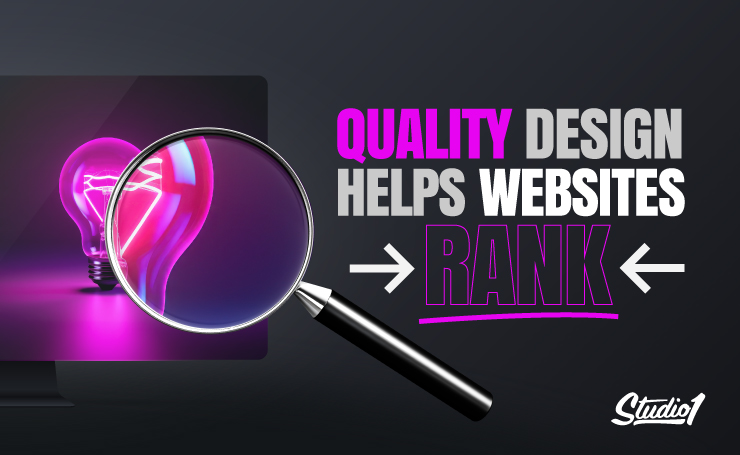
Google has always monitored your website in detail to see how well it connects with your visitors, measuring everything from bounce rates to click-throughs.
Today, Google also evaluates many of the factors known to attract humans – and ups your ranking based on how you show up with Experience, Expertise, Authority, Trust and Usability (aka Double E.A.T.).
In the “bad old days” of SEO, you could temporarily fool Google with simple tricks like putting white text on a white background. More recently, you could stuff blog posts with keywords, or fiddle with hidden tags.
It’s not worth it anymore – the gains are too small. The time and money you spend on selling your website to Google would be better spent on clarifying what your business is about – so that you can get a quality design that sells your business to your customers – as well as to algorithms.
The Google Factor: Designing for Humans and Algorithms
What Google measures today is increasingly the same aspects of your website that make it engaging for your human visitors. They don’t just count keywords and check tags anymore.
Today their 200+ ranking indicators and complex AI processing evaluate the same things that influence your visitors – your presentation, your reputation, your quality and your service.
So today, designing a high-converting website has a double pay-off. Not only does great design KEEP people on your website – it BOOSTS YOUR RANKINGS as well.
Key Website Design Strategies that Contribute to Building Websites that Google Ranks:
- Experience: Google values first-hand insights from personal use or visits, offering authenticity unmatched by AI-generated content.
- Expertise: Quality Raters assess expertise through the author’s knowledge and qualifications, especially on high-impact topics, ensuring content accuracy and trustworthiness.
- Authoritativeness: Your authority is reinforced by endorsements and backlinks from reputable third-party sites, establishing your content as credible.
- Trustworthiness: Build trust with accurate, accessible, and transparent information, enhancing credibility with both users and search engines.
Applying these key strategies ensures that your website ranks well and clearly reflects your business’s core values.
Website Clarity Starts With Your Business Clarity
Designing your business website doesn’t happen in a vacuum. Like building a house, there’s a whole lot of invisible work that gets done before anything shows above the ground.
The foundation of a quality, high-ranking website is clarity about your business. They’re the result of how you design your business. The steps are:
- Understand your audience – who are your customers and what do they value?
- Define and position your brand – what’s your value proposition and your style?
- Develop your influence strategy – how will you use the psychological drivers of influence to enhance your value proposition?
- Build your marketing strategy and sales funnel – how will visitors turn into prospects and prospects turn into customers?
These steps create strong foundations for a high-quality website that converts visitors into prospects and prospects into customers. Without them, you could well end up with an expensive online brochure.
Your Next Steps:
Explore our design portfolio and see the power of high-converting website design.
If you like what you see – but don’t know how to take your next step – then book a free, no-obligation call to discuss your website goals and what could be behind your expensive bounce rate.
We live and breathe website design that gets results for our clients – because it helps us make a real difference to real businesses and THAT’S a whole lot of fun.
Join over 2,000 businesses and influencers who have seen real results from our design expertise.
Investing in quality design is not just about aesthetics; it’s about ensuring your website effectively converts traffic into meaningful, long-term engagement.
So book your call today – no pressure, no sales pitch – just a friendly chat to see if we can help you reduce that expensive bounce rate, and boost your leads and sales =)
Zero obligation. Endless potential!

